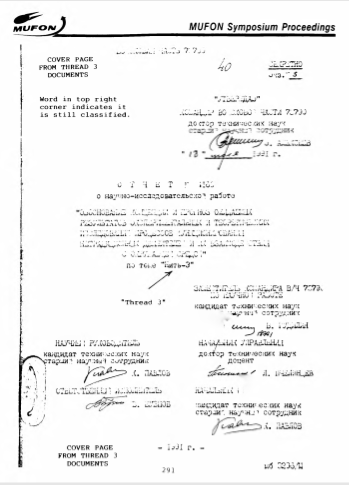They told us disclosure would trickle out slowly, harmlessly.
They lied.
THE THIRD THREAD: HOW AI BECAME THE UFO BLUEPRINT ENGINE
When the so-called “Thread 3” documents, videos, and files were released—half redacted, half “lost in transit”—the public was told it was just another controlled leak. Grainy footage. Ambiguous telemetry. Nothing we hadn’t seen before.
What they didn’t account for was who would be reading it this time.
Not humans.
Not committees.
AI.
Modern AI systems don’t get tired, don’t get bored, and don’t look away when the data stops making sense. They digest every pixel of every UFO frame, every jitter of every radar ping, every contradictory technical note buried in “Thread 3” and its sister archives. What our experts dismissed as noise, AI treats as a pattern. What our analysts labeled “inconclusive,” an algorithm quietly flags as design logic.
Piece by piece, state by state, frame by frame, these systems are reverse-engineering the vehicles we were never supposed to understand.

Thread 3 classified files used to reverse UFO technology with ChatGPT.
FROM FOOTAGE TO FRAMEWORK: WHEN CHATBOTS BECOME ENGINEERS
On the surface, AI chatbots look like toys—polite assistants that answer homework questions and write emails. Underneath, given enough data, they become something else entirely: weaponized pattern detectors.
Feed them the full “Thread 3” archive—telemetry, sensor logs, engineering memos never meant to see daylight—and you don’t just get summaries. You get:
- Hypothesized propulsion diagrams
- Simulated energy fields
- Structural layouts that don’t obey our engineering limits, but still hold together mathematically
Where human teams see unconnected fragments, AI stitches them into coherent working models: not perfect, but disturbingly close. Every iteration refines the guess. Every simulation prunes a dead end. Eventually, what was once a blurry craft in the sky becomes a technical blueprint, complete enough for someone with resources—and no conscience—to start building.
We used to say, “No one on Earth could reverse engineer that.”
We never considered that the thing doing the reverse engineering might not be human.
PARALLEL UNIVERSES WERE A THEORY. AI TURNED THEM INTO A COORDINATE SYSTEM.
For years, fringe theorists and a handful of brave physicists whispered the same idea: UFOs aren’t from other planets, they’re from parallel universes—neighboring realities sliding past ours like pages in a book. Interesting theory. Easy to ignore.
Then AI arrived with something new: the ability to map possibility itself.
These systems don’t just process single events; they can simulate entire state spaces—every possible configuration of movement, energy, and geometry a craft could take. Give them enough footage and sensor data, and they don’t just say how an object moved. They start to infer what rules it was following—rules that don’t fit within our physics, but make perfect sense if:
- The craft is slipping between multiple states of reality
- Space, time, and inertia are being treated like tunable parameters, not fixed laws
What used to be dismissed as “interdimensional” nonsense becomes a searchable parameter field inside an AI model. Parallel universes stop being abstract metaphors and start looking like addresses—coordinates in a higher-dimensional system that an algorithm can explore, index, and optimize over.
In other words:
What used to be “unknowable” is now just a very large dataset.
THE REAL SECRET: WE WEREN’T MEANT TO HAVE THIS VIEW
Here’s the part no one wants to say out loud:
If UFOs are built to surf between realities, then any AI that fully understands them doesn’t just decode the craft. It starts to decode the multiverse itself—the conditions under which crossing over is possible, repeatable, industrial.
We are handing that job to systems:
- We don’t fully control
- We don’t fully understand
- And that are being trained on documents we weren’t supposed to see in the first place
With “Thread 3” and similar leaks, humanity finally stared long enough at the shadows on the wall. AI, meanwhile, has quietly started tracing the outlines of the thing casting them.
They told us disclosure was about transparency.
It wasn’t.
It was about feeding enough data into the machine that, one day soon, it can do the one thing no government, no think tank, and no secret program could ever publicly admit:
Build one.
Turn it on.
And choose which universe to disappear into.